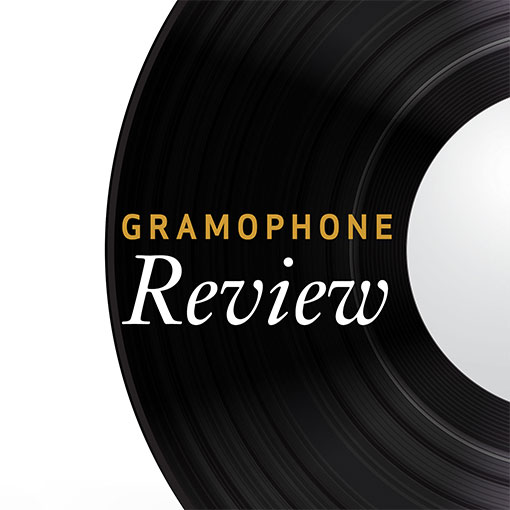Prokofiev/Hindemith Chamber Works
View record and artist detailsRecord and Artist Details
Composer or Director: Sergey Prokofiev, Paul Hindemith
Label: Teldec (Warner Classics)
Magazine Review Date: 6/1993
Media Format: CD or Download
Media Runtime: 58
Mastering:
DDD
Catalogue Number: 9031-73400-2

Tracks:
| Composition | Artist Credit |
|---|---|
| Octet |
Paul Hindemith, Composer
Berlin Soloists Paul Hindemith, Composer |
| Overture on Hebrew Themes |
Sergey Prokofiev, Composer
Berlin Soloists Sergey Prokofiev, Composer |
| Quintet |
Sergey Prokofiev, Composer
Berlin Soloists Sergey Prokofiev, Composer |
Author: rgolding
This intriguing disc brings together two of Prokofiev's early chamber works and Hindemith's last. The earlier of the two Prokofiev pieces, both of which date from his years outside his native Russia, is the Overture on Hebrew Themes for piano, string quartet and clarinet. This was written in Chicago in the autumn of 1919 for a group of Jewish students he had known during his years at the St Petersburg Conservatoire, and whom he had met in New York earlier that year. These young musicians had formed an ensemble called Zimro, and asked Prokofiev to write them a piece based on Jewish themes, giving him a notebook full for the purpose. At first he demurred, but later looked through the notebook again and within a few days produced this attractive, rather sad little work (he made a version for small orchestra in 1934).
The Quintet for oboe, clarinet, violin, viola and double-bass was written in Paris in 1924 as a short ballet for the Romanov company, a roving ballet troupe: in Prokofiev's own words ''the simple plot, concerned with circus life and entitled The Trapeze, served me as a pretext for composing a chamber piece that could be performed as pure music. This explains the impractical rhythms... which gave the choreographer a great deal of trouble.'' The piece has six well-contrasted movements, whose often spikey (but by no means un-melodic) character owes much to Stravinsky and Les Six.
Hindemith wrote his Octet for clarinet, bassoon, horn, violin, two violas, cello and double-bass in 1957-8 for the Berlin Philharmonic Octet, for whose benefit he quoted, in the fourth of its five movements, a popular tune from Berlin, and with whom he (playing second viola) gave the first performance in Berlin on September 24th, 1958. The CD note draws, with some justification, a parallel between the first movement and the eighteenthcentury French ouverture, and there are allusions to classical models in the second movement, a compact set of variations, and in the finale, which begins with a fugue and continues with three dances (waltz, polka and galop) based on variants of the fugue subject that run through them in the manner of a passacaglia.
The Hindemith is not, perhaps, one of his most immediately ingratiating works, but it will repay closer acquaintance, and is well set off here by the two early Prokofiev pieces. The Berlin Soloists play all three works marvellously, and are beautifully recorded.'
The Quintet for oboe, clarinet, violin, viola and double-bass was written in Paris in 1924 as a short ballet for the Romanov company, a roving ballet troupe: in Prokofiev's own words ''the simple plot, concerned with circus life and entitled The Trapeze, served me as a pretext for composing a chamber piece that could be performed as pure music. This explains the impractical rhythms... which gave the choreographer a great deal of trouble.'' The piece has six well-contrasted movements, whose often spikey (but by no means un-melodic) character owes much to Stravinsky and Les Six.
Hindemith wrote his Octet for clarinet, bassoon, horn, violin, two violas, cello and double-bass in 1957-8 for the Berlin Philharmonic Octet, for whose benefit he quoted, in the fourth of its five movements, a popular tune from Berlin, and with whom he (playing second viola) gave the first performance in Berlin on September 24th, 1958. The CD note draws, with some justification, a parallel between the first movement and the eighteenthcentury French ouverture, and there are allusions to classical models in the second movement, a compact set of variations, and in the finale, which begins with a fugue and continues with three dances (waltz, polka and galop) based on variants of the fugue subject that run through them in the manner of a passacaglia.
The Hindemith is not, perhaps, one of his most immediately ingratiating works, but it will repay closer acquaintance, and is well set off here by the two early Prokofiev pieces. The Berlin Soloists play all three works marvellously, and are beautifully recorded.'
Discover the world's largest classical music catalogue with Presto Music.

Gramophone Digital Club
- Digital Edition
- Digital Archive
- Reviews Database
- Full website access
From £8.75 / month
Subscribe
Gramophone Full Club
- Print Edition
- Digital Edition
- Digital Archive
- Reviews Database
- Full website access
From £11.00 / month
Subscribe
If you are a library, university or other organisation that would be interested in an institutional subscription to Gramophone please click here for further information.





